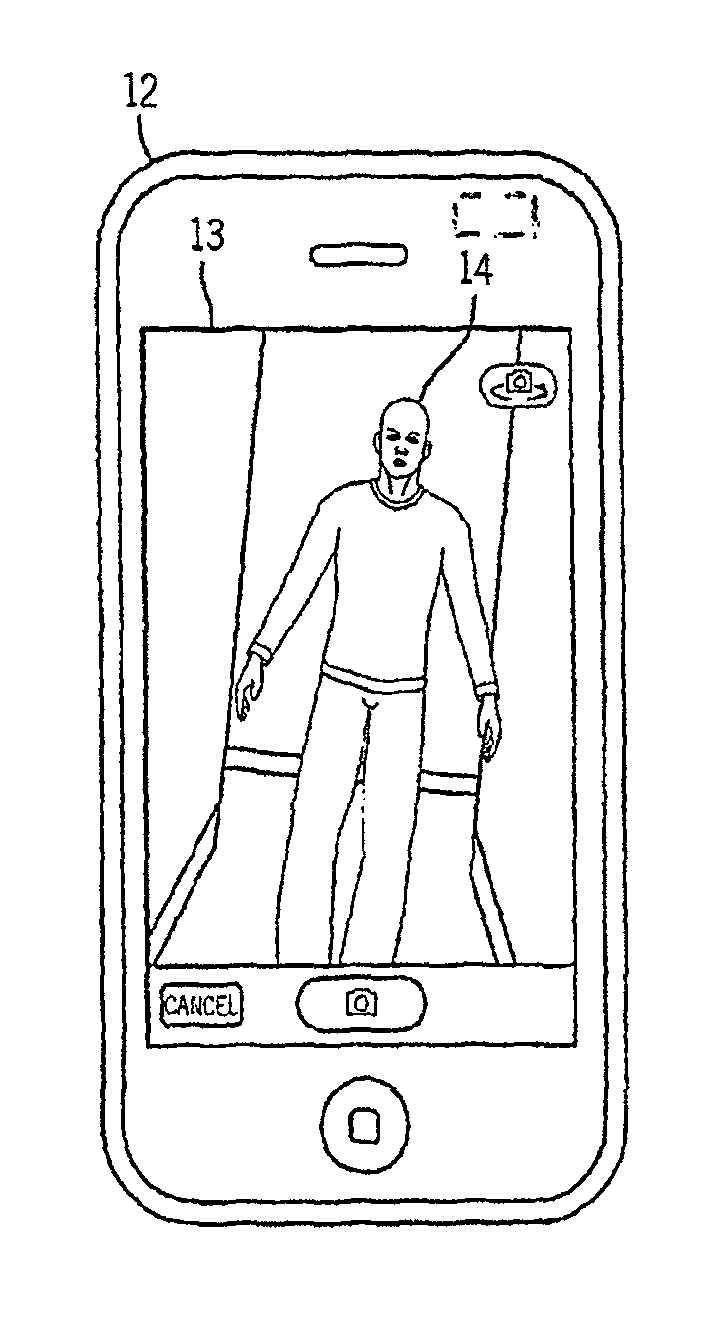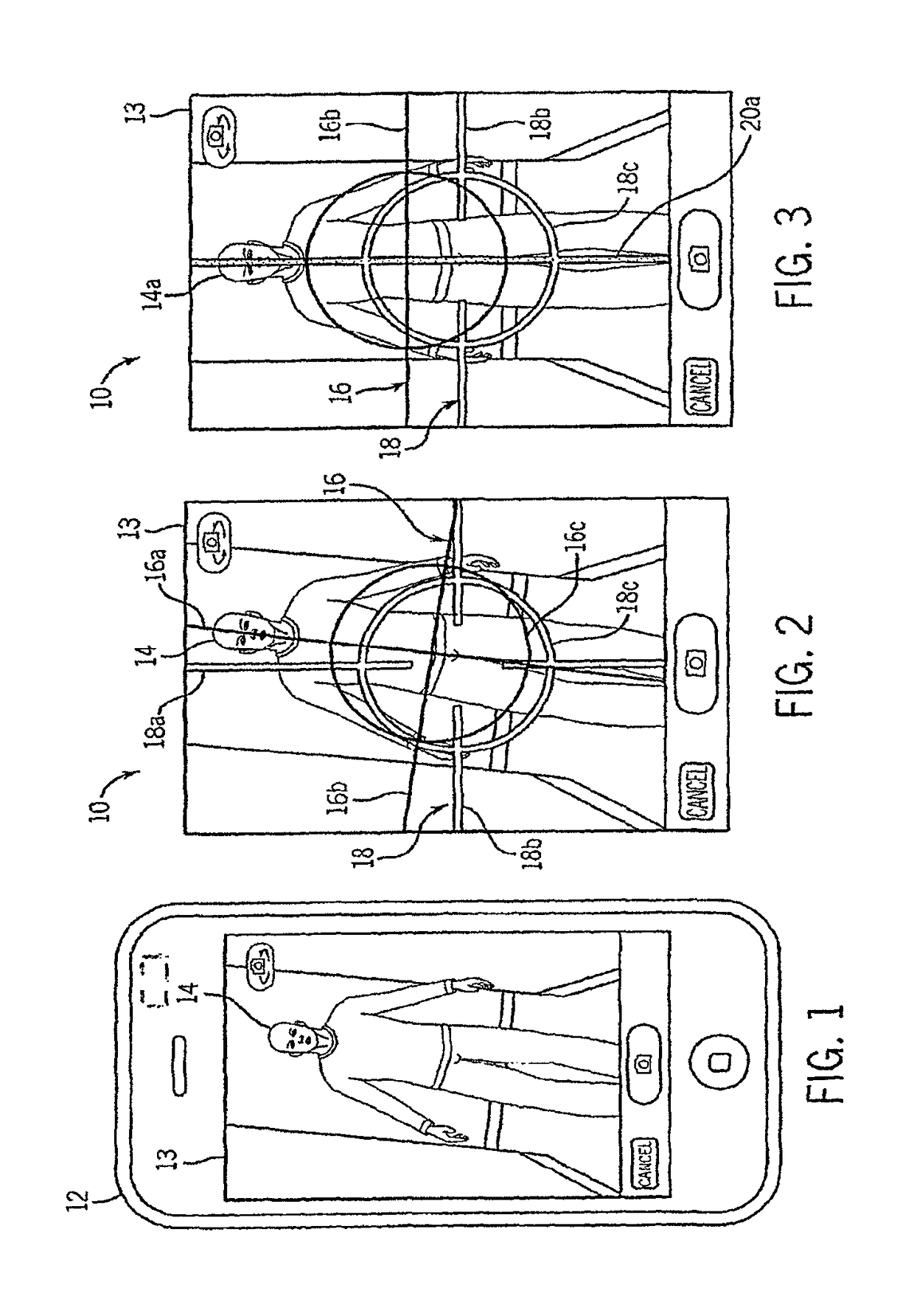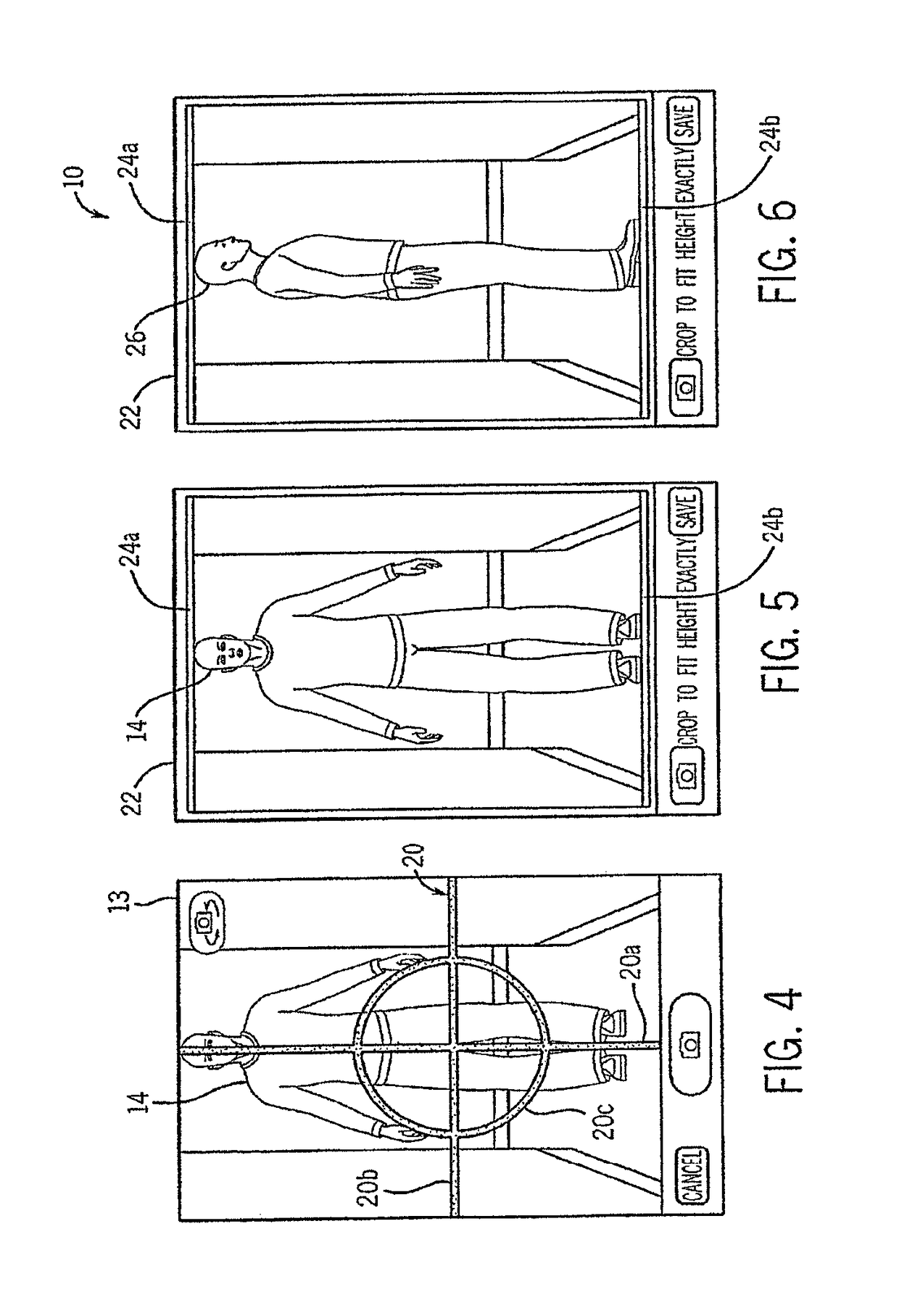Method and system for postural analysis and measuring anatomical dimensions from a digital three-dimensional image on a mobile device
a three-dimensional image and digital image technology, applied in the field of three-dimensional image on a mobile device, can solve the problems of time-consuming and imprecise measurement of all postural deviations, and achieve the effect of more efficient measuremen
- Summary
- Abstract
- Description
- Claims
- Application Information
AI Technical Summary
Benefits of technology
Problems solved by technology
Method used
Image
Examples
Embodiment Construction
[0048]The following detailed description taken with the accompanying drawings is of the best currently contemplated modes of carrying out exemplary embodiments of the invention. The description is not to be taken in a limiting sense, but is made merely for the purpose of illustrating the general principles of the invention, since the scope of the invention is best defined by the appended claims.
[0049]Various inventive features are described below that can each be used independently of one another or in combination with other features.
[0050]Broadly, embodiments of the present invention generally provide a method for determining an anatomical measurement of the human body such as measuring the dimensions of the human body comprising providing a digital anthropometer on a mobile device, and digitizing anatomical landmarks on a displayed image such as a photograph or digital three-dimensional image of the human body displayed on the device with established calibration methods for measur...
PUM
 Login to View More
Login to View More Abstract
Description
Claims
Application Information
 Login to View More
Login to View More - R&D
- Intellectual Property
- Life Sciences
- Materials
- Tech Scout
- Unparalleled Data Quality
- Higher Quality Content
- 60% Fewer Hallucinations
Browse by: Latest US Patents, China's latest patents, Technical Efficacy Thesaurus, Application Domain, Technology Topic, Popular Technical Reports.
© 2025 PatSnap. All rights reserved.Legal|Privacy policy|Modern Slavery Act Transparency Statement|Sitemap|About US| Contact US: help@patsnap.com



